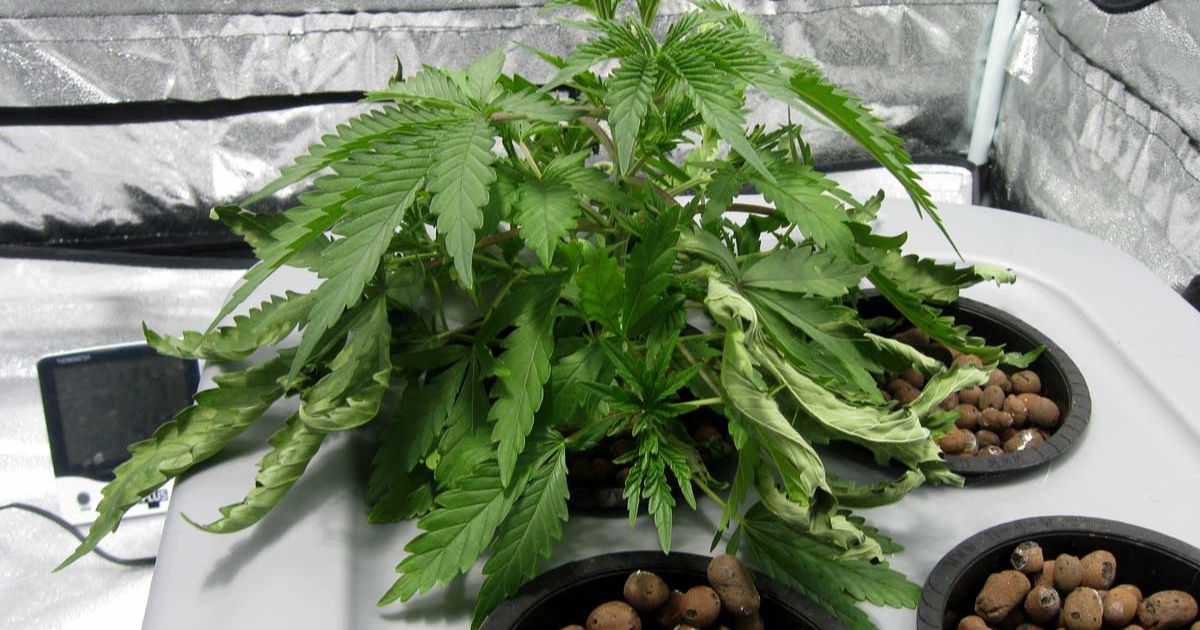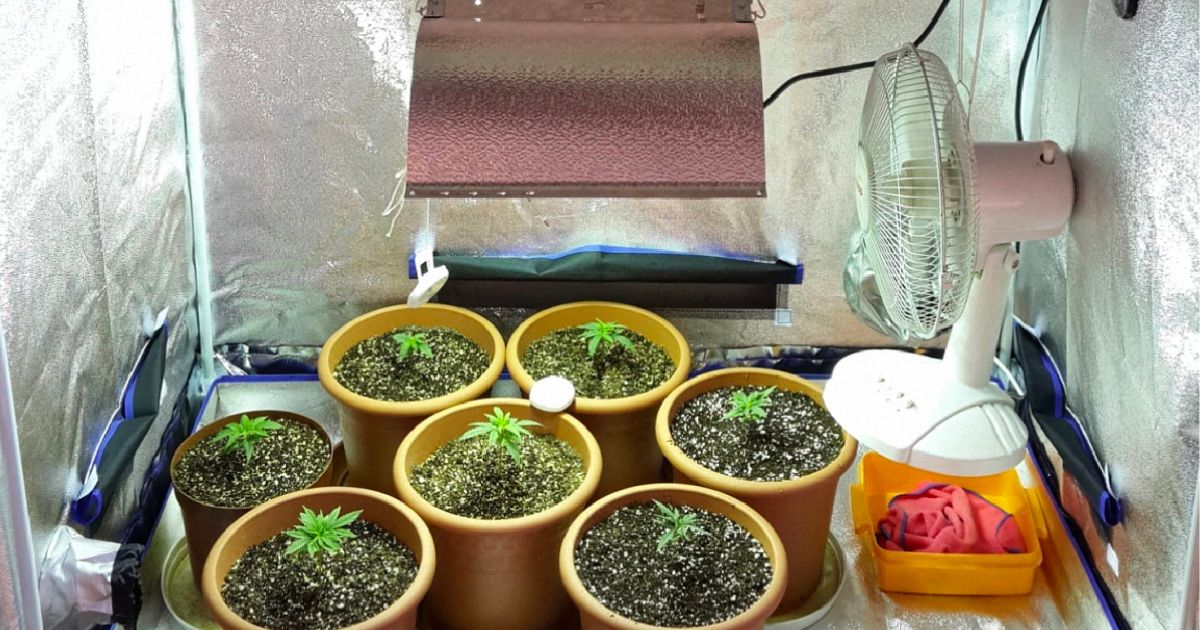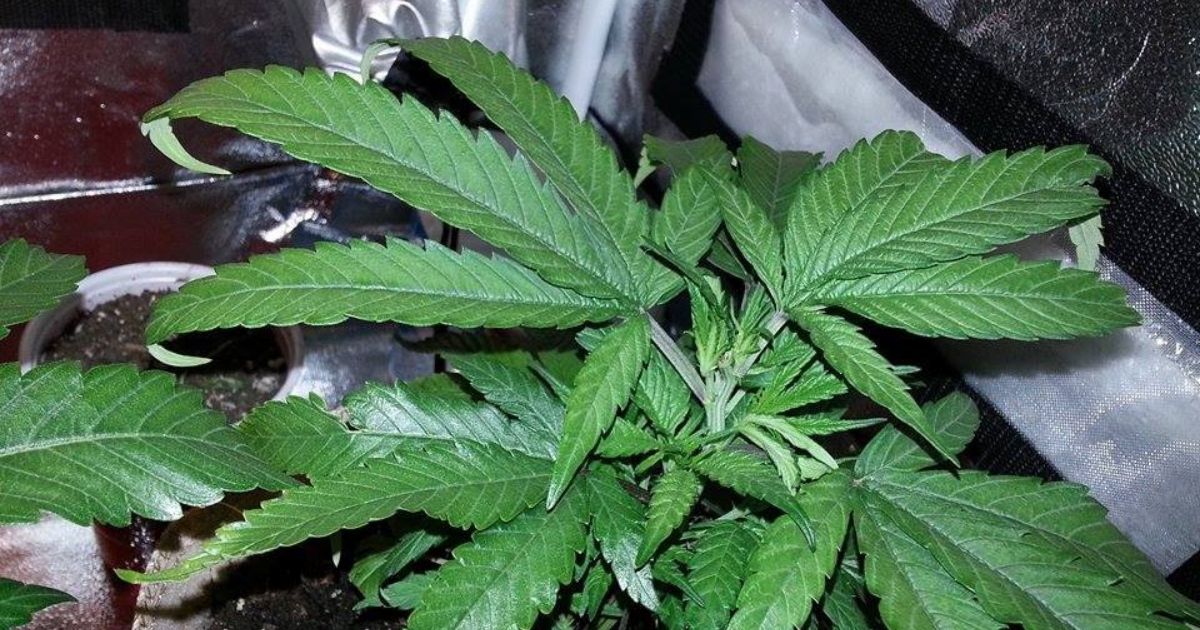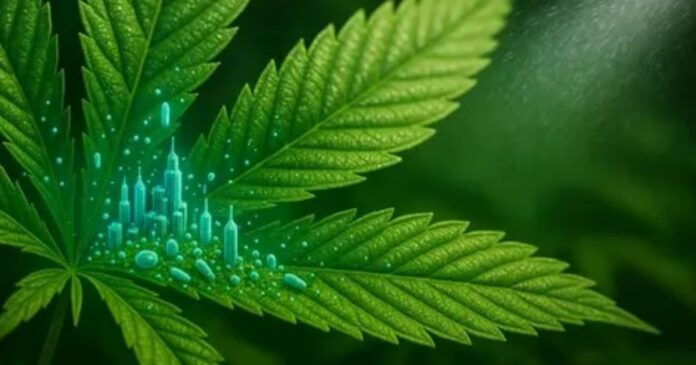Noticing your indoor plant leaves curling inwards can be worrying, especially if your plants looked perfectly healthy just days ago. Leaf curling is one of the earliest signs that something in your grow environment isn’t quite right. Whether the leaves are folding like tacos, clawing downwards, or curling toward the veins, each pattern tells you a different story about your plant’s health.In most cases, inward curling is a plant’s natural reaction to stress, caused by factors like excessive heat, low humidity, overwatering, or nutrient imbalance. When these conditions persist, your cannabis plants struggle to maintain proper water balance and nutrient uptake, leading to slowed growth and reduced yield potential.
The good news? Leaf curling is reversible when diagnosed early. By understanding the leading causes and learning how to correct them, you can restore your plant’s vitality and keep your grow room thriving. In this guide, we’ll explore why cannabis leaves curl inwards, how to pinpoint the exact cause, and the best ways to fix and prevent it in the future.
Understanding Leaf Curling in Cannabis Plants
Leaf curling in cannabis is one of the most common warning signs growers encounter, especially in controlled indoor environments. When leaves begin to curl inward, they’re essentially signalling that something in their environment or care routine is causing stress. To understand the problem clearly, it’s essential to know what type of curl you’re seeing and what it indicates.
Inward curling, often called “tacoing” or “cupping”, means the leaf edges start folding upward or toward the centre, resembling the shape of a taco shell. This reaction usually happens when the plant tries to conserve moisture or protect itself from environmental extremes like excess light or heat. Cannabis Leaf Pics On the other hand, downward curling or “clawing” typically points to issues such as overwatering or nitrogen toxicity.
Each type of curl provides a clue to the underlying issue. For example:
- Upward curling often relates to heat stress or low humidity.
- Downward curling (clawing) usually means nutrient imbalance or overwatering.
- Inward curling signals stress from light intensity, dry air, or poor airflow.
Understanding these visual cues is the first step to effective plant care. By observing the direction, pattern, and severity of the curling, fan leaves curling up edges you can quickly narrow down the cause and apply the correct fix before it affects your plant’s overall growth or yield.
Common Causes of Cannabis Leaves Curling Inwards

When cannabis leaves curling up at tips start curling inward, it’s your plant’s way of saying, “I’m stressed.” The cause can range from environmental imbalances to nutrient or watering mistakes. Below are the most common reasons indoor cannabis leaves curl inward and what they reveal about your grow conditions.
Heat Stress
One of the leading causes of inward leaf curl is excessive heat. When the grow room temperature rises above 85°F (29°C), the plant’s leaves fold inward to reduce surface area and minimise water loss. You may also notice dry, crispy edges or leaves near the grow lights, indicating more damage.
Fix:
- Maintain temperature between 70–82°F (21–28°C).
- Increase airflow and use oscillating fans to distribute heat evenly.
- Adjust grow lights to the correct distance to avoid light burn.
Low Humidity (Dry Air)
Cannabis thrives in moderate humidity. If the air becomes too dry, especially during the seedling or vegetative stage, Why Are My Weed Plants’ Leaves Turning Yellow leaves curl inward to conserve moisture. This often occurs when the humidity drops below 40%.
Fix:
- Keep humidity between 55–70% during early growth and 40–50% during flowering.
- Use a humidifier or place water trays near your plants.
- Avoid placing plants directly under strong fans.
Overwatering or Poor Drainage
Too much water suffocates roots by depriving them of oxygen. As a result, the roots struggle to absorb nutrients, causing leaves to curl and droop inward.
Fix:
- Ensure pots have proper drainage holes.
- Use well-aerated soil or add perlite to improve airflow around the roots.
Nutrient Imbalance (Nitrogen or Magnesium Issues)
Nutrient overload or deficiency can trigger leaf curl.
- Nitrogen toxicity causes dark green, shiny leaves that curl down like claws.
- Magnesium deficiency leads to curling, mahamanjisthadi kadha side effects along with yellowing between the veins.
Fix:
- Use a balanced nutrient mix and follow the feeding schedule carefully.
- Flush the soil with clean, pH-balanced water if overfeeding occurred.
- Add a magnesium supplement like Cal-Mag if deficiency symptoms appear.
Wind Burn from Fans
Strong or constant airflow can damage leaf tissue, leading to curling or shrivelling. If cannabis leaves twisting and curling closest to a fan curl inward or appear dry, it’s likely wind burn.
Fix:
- Redirect fans so air circulates gently without directly hitting the plants.
- Use oscillating fans on a low or medium setting.
pH Imbalance
When the pH of your water or growing medium is off, nutrients can’t be adequately absorbed, leading to stress symptoms like inward curling.
Fix:
- Maintain soil pH between 6.0–7.0 or 5.5–6.5 for hydroponics.
- Test your water and nutrient solution Why You Should Beginners Guide to Vape Pen a Little Every Day regularly with a pH meter.
- Use pH up/down solutions to correct imbalances.
Light Stress
Placing grow lights too close to your plants can cause light burn, where leaves curl inward or upward in defence. The tops may also appear bleached or yellowish.
Fix:
- Keep LED grow lights 12–24 inches above the canopy, depending on light intensity.
- Gradually increase light exposure rather than sudden intensity changes.
By identifying these common causes, you can take corrective action quickly to restore your plant’s health. leaves twisting and curling Most cannabis leaf curling problems are reversible once the root issue, be it environmental, nutritional, or watering-related, is addressed.
How to Diagnose the Exact Cause
When your cannabis leaves start curling inwards, it’s crucial to pinpoint the exact cause before taking action. Treating the wrong problem can make the situation worse, so diagnosis should always come first. cbd oil india The good news? You can find the root of the issue by observing your plants carefully and checking a few key grow conditions.
Here’s a step-by-step guide to accurately diagnose what’s causing your cannabis leaves to curl inward:
Check the Temperature
Start by measuring the temperature near the canopy level, where the leaves are curling.
- If it’s above 85°F (29°C), Cannabis Flowering Stages – Guide To Weed Budding Week By Week heat stress is likely the main culprit.
- Look for leaves closest to the grow lights curling upward or inward like tacos.
Measure the Humidity
Low humidity makes plants lose moisture too quickly, forcing the leaves to curl inward to conserve water.
- Ideal humidity: 55–70% during the vegetative stage and 40–50% during flowering.
Inspect Your Watering Habits
Overwatering and underwatering can both cause leaf curl, but in different ways:
- Overwatered plants have soft, droopy, inward-curling leaves.
- Underwatered plants show dry, brittle leaves that curl upward or inward.
Examine Nutrient Levels
Nutrient imbalance is another major factor.
- Too much nitrogen = dark green, shiny leaves curling downward (the “claw”).
- Magnesium deficiency = yellowing between veins and slight inward curl.
Test the pH Level

Incorrect pH can lock out nutrients, How Much Water Does a Cannabis Plant Need even if you’re feeding correctly.
- Ideal pH for soil: 6.0–7.0
- Perfect pH for hydroponics: 5.5–6.5
Evaluate Airflow and Light Distance
If your fans are blowing too hard or the lights are too close, your plants can become stressed.
- Wind burn: The leaves closest to the fans curl inward and feel crispy.
- Light stress: Upper leaves curl inward and show bleaching or yellow tips.
Observe Leaf Position and Pattern
Finally, pay attention to where the curling occurs:
- Top leaves only: Likely heat or light stress.
- Bottom leaves first: Possible overwatering or nutrient imbalance.
- Whole plant curling: Environmental or pH issues affecting overall health.
By following these diagnostic steps, you’ll be able to identify the exact cause of inward leaf curling and apply the correct fix confidently. Remember, most cannabis problems start small, so early observation and quick correction are key to keeping your plants lush, green, and productive.
Effective Fixes and Prevention Tips
Once you’ve identified the cause behind your cannabis leaves curling inwards, it’s time to take corrective action. Most leaf-curling issues can be reversed if addressed early. Fixing the underlying cause is more important than just addressing the symptoms, and it’s crucial to build a prevention strategy that keeps your growing conditions consistent.
Here are the most effective fixes and long-term prevention tips:
Maintain Ideal Temperature and Humidity
Fix:
- Keep grow room temperatures between 70–82°F (21–28°C) and between 65-70°F (18-21°C) throughout the day and at night.
- Maintain humidity levels of 55–70% in the vegetative stage and 40–50% in the flowering stage.
- Use exhaust fans, oscillating fans, or air conditioners to cool the room if it gets too hot.
Prevention Tip:
- Install a digital thermometer-hygrometer combo to constantly monitor temperature and humidity.
- Set up an AC Infinity controller or similar device for automatic climate adjustments.
Correct Your Watering Routine
Fix:
- Water your plants only when the top inch of soil feels dry.
- Ensure pots have proper drainage holes.
- Avoid shallow, frequent watering; water deeply and less often.
Prevention Tip:
- Use fabric pots for better airflow and root oxygenation.
- Lift your pots occasionally if they feel heavy; skip watering. If they feel light, it’s time to water.
Balance Nutrient Feeding
Fix:
- If leaves are dark green and curling downward, flush the soil with clean, pH-balanced water to remove excess nutrients.
- For deficiencies (like magnesium), supplement with Cal-Mag or other balanced nutrients.
- Follow the manufacturer’s feeding schedule, but always start with 75% of the recommended dose for safety.
Prevention Tip:
- Keep a log of feeding times, doses, and plant reactions.
- Rotate between feeding and plain watering to prevent salt buildup.
Adjust Light Distance and Intensity
Fix:
- If your lights are too close, raise them 12–24 inches above the canopy (depending on the type and power).
- Check for bleaching or burnt leaf tips, which are clear signs of light stress.
Prevention Tip:
- Gradually increase light exposure when switching from seedlings to veg, or from veg to flowering.
- Use a PAR meter or manufacturer’s distance chart to set the right height for your grow lights.
Improve Air Circulation Without Causing Wind Burn
Fix:
- Redirect strong fan airflow away from the plant canopy.
- To maintain a gentle air flow throughout the grow area, use oscillating fans.
Prevention Tip:
- Keep fans on low or medium speed and ensure air moves around, not directly at your plants.
- Regularly clean fans and vents to avoid dust buildup, which reduces efficiency.
Maintain Proper pH Levels.
Fix:
- Test the pH of your water and nutrient mix regularly.
- Adjust using pH Up or pH Down solutions to stay within range:
- Soil: 6.0–7.0
- Hydroponics: 5.5–6.5
Prevention Tip:
- Calibrate your pH meter weekly for accurate readings.
- Use filtered or dechlorinated water to prevent pH swings.
Strengthen Plant Resilience
Fix:
- Add beneficial microbes or mycorrhizae to improve root health.
- Trim dead or damaged leaves to reduce plant stress.
Prevention Tip:
- Keep a steady light, water, and feeding schedule. Cannabis thrives on consistency.
- Perform regular inspections to catch problems early before they spread.
When to Worry and When Not To
Not every case of inward leaf curling on your cannabis plant signals a serious problem. Sometimes, it’s a temporary stress response that the plant can recover from on its own once conditions stabilise. The key is knowing when to take urgent action and when to observe and let the plant adjust naturally.
When Not to Worry
Minor leaf curling can happen for harmless reasons, especially during growth transitions or after small environmental changes.
You don’t need to panic if:
- Only a few leaves are slightly curled, while the rest look healthy.
- → This could be a brief response to minor fluctuations in temperature or humidity.
- New growth appears healthy and vibrant.
- → If the curling is limited to older leaves, the plant is likely adapting to recent changes in light or nutrients.
- You’ve recently adjusted the lighting or feeding.
- → Plants often show mild stress for a few days after a new setup or nutrient change, but usually recover quickly.
- The leaf colour remains normal (green, not yellow or brown).
- → Curling without discolouration often means temporary heat or airflow stress rather than a disease or deficiency.
In these cases, monitor your grow conditions closely, keep your setup stable, and avoid making too many adjustments at once.
When to Worry
You should take immediate action if the curling is severe, widespread, or accompanied by other warning signs.

Be concerned if:
- Most leaves are curling tightly inward or downward.
- → This often indicates severe heat stress, overwatering, or nutrient toxicity.
- The leaves feel dry, crispy, or brittle.
- → Could point to light burn, low humidity, or nutrient imbalance.
- You notice discolouration (yellow, brown, or purple spots).
- → This suggests nutrient deficiency, pH imbalance, or root damage.
- New growth is twisted, deformed, or stunted.
- → A sign of ongoing stress that needs quick correction.
- There’s no improvement after several days of adjusting conditions.
- → The issue may be deeper, such as root rot, pest infestation, or extreme nutrient lockout.
Conclusion
Leaf curling in indoor cannabis plants is a common issue that nearly every grower faces at some point. While seeing your leaves fold inward can be worrying, it’s important to remember that this symptom is your plant’s way of communicating stress, not a sign of failure. Most of the time, curled leaves are a reversible problem caused by environmental factors like heat, humidity, watering habits, or nutrient imbalance.
The key to recovery lies in early observation and accurate diagnosis. By regularly checking temperature, humidity, pH levels, and watering patterns, you can identify what’s throwing your plants off balance. Once the underlying issue is corrected, whether it’s moving a light farther away, adjusting your feeding schedule, or improving airflow, your cannabis leaves will gradually return to their standard shape and colour.
Healthy cannabis plants thrive on consistency. Maintaining a stable environment, balanced nutrients, and a proper watering routine not only prevents leaf curling but also promotes stronger growth and higher yields.In short: listen to your plants. Their leaves tell you everything you need to know. A little attention, quick action, and consistent care will keep your indoor garden green, lush, and flourishing from seed to harvest.
FAQ
What does it mean if only the top leaves are curling inwards?
If the top leaves are curling while the lower ones remain healthy, it’s often heat stress, light stress, or low humidity. Adjust the distance of your grow lights and monitor temperature and humidity levels to fix the problem.
Can light burn cause cannabis leaves to curl?
Yes. When grow lights are too close or too intense, leaves may curl inward or upward as a defence mechanism. Signs of light burn also include bleaching, yellow tips, or crispy edges.
How long does it take for leaves to recover from curling?
Recovery depends on the severity of stress and how quickly the cause is corrected. Minor curling can improve within a few days, while severe or prolonged stress may take 1–2 weeks for new growth to appear healthy.
Should I trim curled leaves off my cannabis plant?
Only remove leaves if they are dead, dried, or severely damaged. Healthy curled leaves should be left alone, as they can recover once the stress is resolved.
Does inward leaf curling always mean nutrient burn?
No. While nutrient issues (like nitrogen toxicity or magnesium deficiency) can cause curling, other factors like heat, low humidity, wind burn, or pH imbalance are equally common causes. Accurate diagnosis is key.
How can I prevent leaf curling in the future?
Maintain stable temperature and humidity, avoid overwatering or overfeeding, monitor pH levels, and ensure proper light distance and airflow. Regular observation is the best preventive measure.




